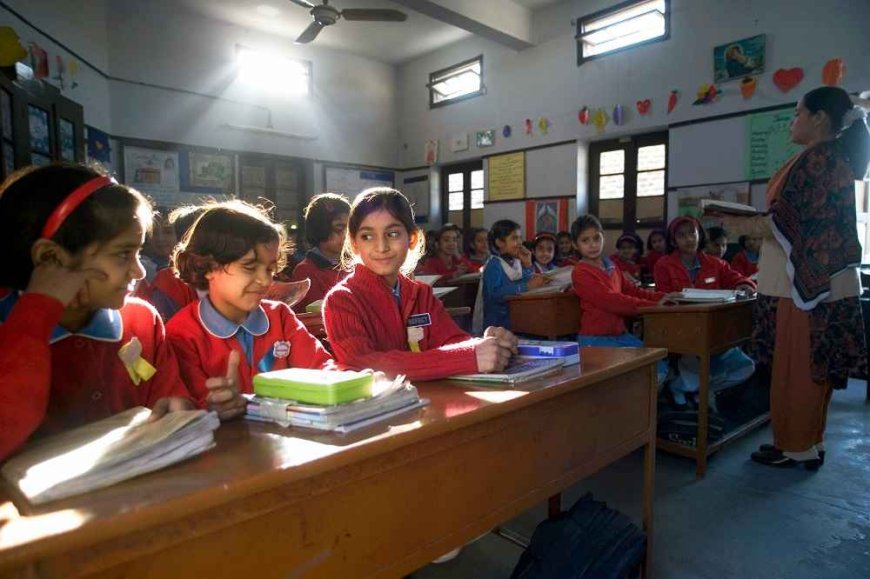Understanding the Classification of High School in Pakistan
In Pakistan, education plays a crucial role in shaping the future of individuals. The education system is divided into various levels,

In Pakistan, education plays a crucial role in shaping the future of individuals. The education system is divided into various levels, with high school being a significant milestone. However, determining the classification of high school in Pakistan can be a bit complex due to variations in terminology and grade structures. In this article, we will explore the different classifications of high school in Pakistan and shed light on the educational journey of students at this stage.
Matriculation System:
One of the primary classifications of high school in Pakistan is based on the matriculation system. This system typically consists of grades nine and ten, which are commonly referred to as "Matric." Matriculation exams, conducted by various education boards across the country, are considered crucial for students' academic progress. Successful completion of matriculation paves the way for higher education opportunities.
Intermediate System :
The second classification of high school in Pakistan is the intermediate system, which comprises grades eleven and twelve. The intermediate stage is often known as "Inter" and is an essential phase for students aiming to pursue higher education, including bachelor's degree programs. The intermediate level offers specialization in various fields, such as pre-medical, pre-engineering, humanities, and commerce, allowing students to choose a path aligned with their interests and career aspirations.
Cambridge System:
Alongside the matriculation and intermediate systems, another significant classification of high school in Pakistan is the Cambridge system. Many private schools in the country follow the Cambridge curriculum, which leads to the internationally recognized Cambridge O-level and A-level qualifications. The O-levels, equivalent to the matriculation level, are completed in grades nine and ten, while the A-levels, similar to intermediate, are undertaken in grades eleven and twelve.
Federal Board System:
The federal board system, administered by the Federal Board of Intermediate and Secondary Education (FBISE), is another classification of high school in Pakistan. This system operates in federal institutions, including schools in the capital city, Islamabad. It encompasses both matriculation and intermediate levels and follows a specific curriculum designed to ensure quality education and standardized assessments.
Alternative Systems:
In addition to the aforementioned classifications, Pakistan also offers alternative systems for high school education. These include international curricula, such as the International Baccalaureate (IB) and American High School Diploma programs. While relatively less common, these alternative systems provide students with diverse educational experiences and the flexibility to pursue higher education both nationally and internationally.
Challenges and Reforms:
While high school education in Pakistan offers a variety of classifications, it also faces challenges that need attention and reform. One of the significant issues is the disparity in educational quality among different systems and schools. The public education system, in particular, often struggles with inadequate infrastructure, lack of resources, and a shortage of qualified teachers. Efforts are being made to address these challenges through policy reforms, increased funding, and teacher training programs to enhance the overall quality of education.
Transition to Higher Education:
High school serves as a crucial bridge to higher education for Pakistani students. Upon completing their high school education, students have several options to pursue further studies. They can apply to universities in Pakistan based on their matriculation or intermediate results, or they can opt for international educational opportunities by appearing for standardized tests such as the SAT or ACT. Scholarships and financial assistance programs are available to support deserving students in their pursuit of higher education, regardless of the classification of high school they attended.
Impact on Career Pathways :
The classification of high school in Pakistan plays a significant role in shaping students' career pathways. The selection of subjects and areas of specialization during high school, such as pre-medical, pre-engineering, humanities, or commerce, lays the foundation for future career options. High school provides students with essential knowledge and skills in their chosen fields, helping them make informed decisions about their future careers. Furthermore, the successful completion of high school and attainment of relevant qualifications opens doors to various professional opportunities in sectors such as medicine, engineering, business, social sciences, and more.
High school education in Pakistan encompasses various classifications, including the matriculation and intermediate systems, the Cambridge system, the federal board system, and alternative systems. Each classification presents its unique characteristics and benefits. However, the challenges in the education system and the transition to higher education are important aspects that need to be addressed. By focusing on reforms, enhancing the quality of education, and providing equal opportunities to all students, Pakistan can empower its youth and pave the way for a brighter future. High school education acts as a stepping stone towards higher education and successful careers, allowing students to realize their potential and contribute meaningfully to society.
